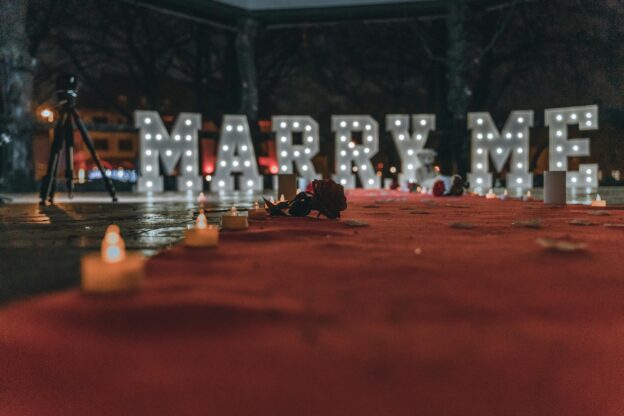Your wedding day is one of the most beautiful days of your life, but without a well-planned timetable, it can also be one of the most stressful. A detailed timetable will help you make the day run smoothly and ensure that you and your guests can enjoy it to the fullest. At Wedding Wonderland, we understand the importance of a well-organized wedding. In this article, we’ll give you a comprehensive guide on how to create an efficient and realistic wedding day timetable.
Why is a wedding day timetable important?
A well-established timetable will ensure that all parts of your wedding run smoothly. It prevents unnecessary stress, ensures a smooth flow of the day and gives suppliers and guests clear guidelines. Wedding Wonderland advises to draw up the timetable well in advance and to communicate with everyone involved, so that everyone knows what is expected.
With a tight but flexible timetable, you avoid:
- Delays that can lead to less time for important moments like photos or dinner.
- Confusion among guests and suppliers about where and when they are expected.
- Rushed moments that prevent you from fully enjoying your day.
Step-by-step guide to a wedding day schedule
1. Start with the ceremony
The wedding ceremony is the focal point of the day and largely determines what the rest of the schedule will look like. Consider the following questions:
- What time do you want to get married?
- How long does the ceremony last? (On average 30-45 minutes, depending on the interpretation.)
- Are there any religious or traditional elements that require extra time?
- Where does the ceremony take place and how long does the travel time take to get there?
Example schema:
- 14:00 – Guests arrive and take their seats
- 14:30 – Start of the ceremony
- 15:00 – Exchange of vows and rings
- 15:15 – Official closing and congratulations
- 15:30 – Photo opportunity with family and friends
2. The morning and preparations
Getting ready for the wedding is a special moment full of emotion and excitement. Make sure you allow plenty of time for:
- Hair and make-up (1.5 to 2 hours per person, depending on complexity)
- Dress up (30 minutes to 1 hour, especially if the wedding dress is intricate)
- A leisurely breakfast and possibly a glass of champagne with friends and family
- A ‘first look’ photoshoot (optional, schedule 1 hour extra)
Example schema:
- 08:00 – Breakfast and relaxation
- 09:00 – Hair and make-up start
- 11:00 – Dressing and final preparations
- 12:00 – First look with partner or parents
- 12:30 – Departure to the ceremony location
3. The reception and drinks
After the ceremony, it is time to toast the wedding with your guests. This moment usually lasts 1.5 to 2 hours and includes:
- Reception of guests with a drink
- Cutting the wedding cake
- Short speeches from family or friends
- Photo opportunities with guests
- Any musical performances or entertainment
Example schema:
- 15:30 – Reception with champagne
- 16:00 – Cutting the cake
- 16:15 – Speeches and toast
- 16:45 – Informal conversations and relaxation
- 17:30 – Transition to dinner
4. Dinner
Dinner is an important part of the wedding day. It offers not only a culinary moment, but also a chance to relax and enjoy each other’s company. The duration of the dinner depends on the type of meal:
- Buffet: 1.5 to 2 hours
- Multi-course dinner: 2 to 3 hours
- Informal BBQ or food trucks: 1.5 hours
Example schema:
- 18:00 – Guests take a seat
- 18:15 – Start of dinner
- 19:00 – Possible speeches between courses
- 20:00 – Dinner completed, short break
5. The evening party
After dinner, it’s time for a smashing party! Important components are:
- Opening dance
- Band or DJ who sets the mood
- Surprises such as a fireworks show or special act
- Special closing, such as a confetti rain or a guard of honour of guests
Example schema:
- 20:30 – Opening dance
- 21:00 – Party starts, DJ or band plays
- 23:00 – Special act or surprise
- 00:00 – Last dance and closing
6. Closure and departure
Consider how the day ends:
- Make sure there is transport ready for you and the guests
- Plan a nice ending, such as a ‘send-off’ with lights or bubbles
- Give guests the opportunity to say goodbye and pick up their belongings
Example schema:
- 00:30 – Last dance and farewell
- 01:00 – End of the wedding and departure
Useful tips for a smooth course
1. Communicate the timetable
- Share the schedule with your master of ceremonies, photographer, and vendors.
- Print a condensed version for guests so they know where and when they need to be somewhere.
2. Plan buffers
- Things often run late, so keep extra time between parts.
- Take unexpected moments into account, such as a small touch to your make-up.
3. Think about the guests
- Make sure there are enough moments of rest so that everyone stays relaxed.
- Be considerate of children and the elderly by providing comfortable seating.
Conclusion
A well-planned wedding day schedule ensures that you and your guests can enjoy the day to the fullest. Wedding Wonderland is happy to help you put together a schedule that perfectly suits your wishes and needs. By scheduling enough time for each moment and making clear agreements, you prevent stress and make your wedding day an unforgettable experience!
Do you want help creating your perfect wedding day schedule? Contact Wedding Wonderland and find out how we can plan your dream wedding down to the last detail!






